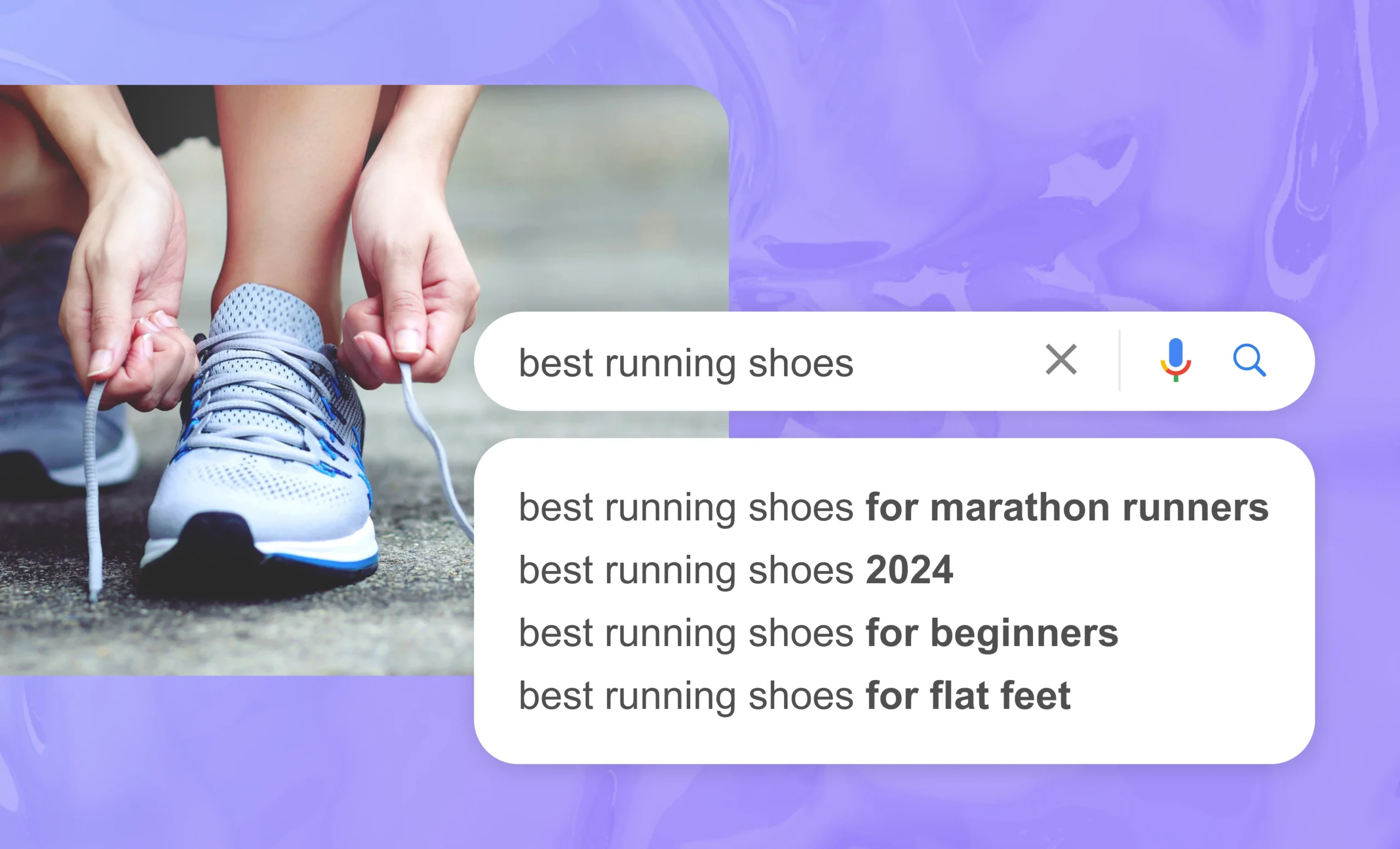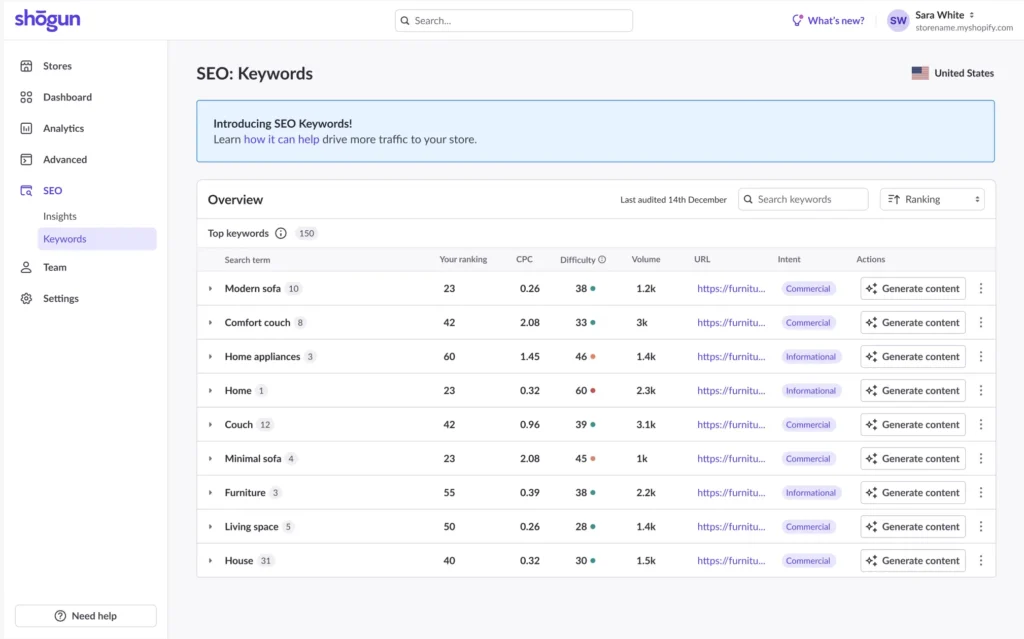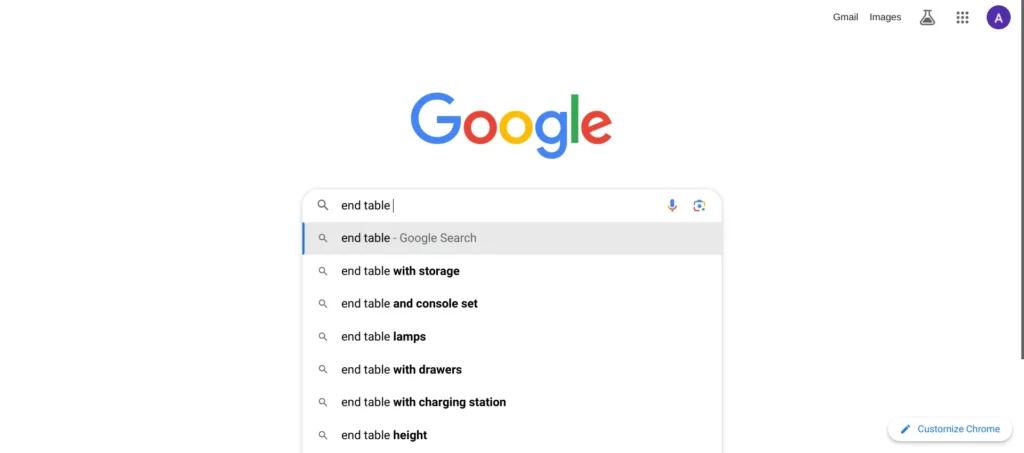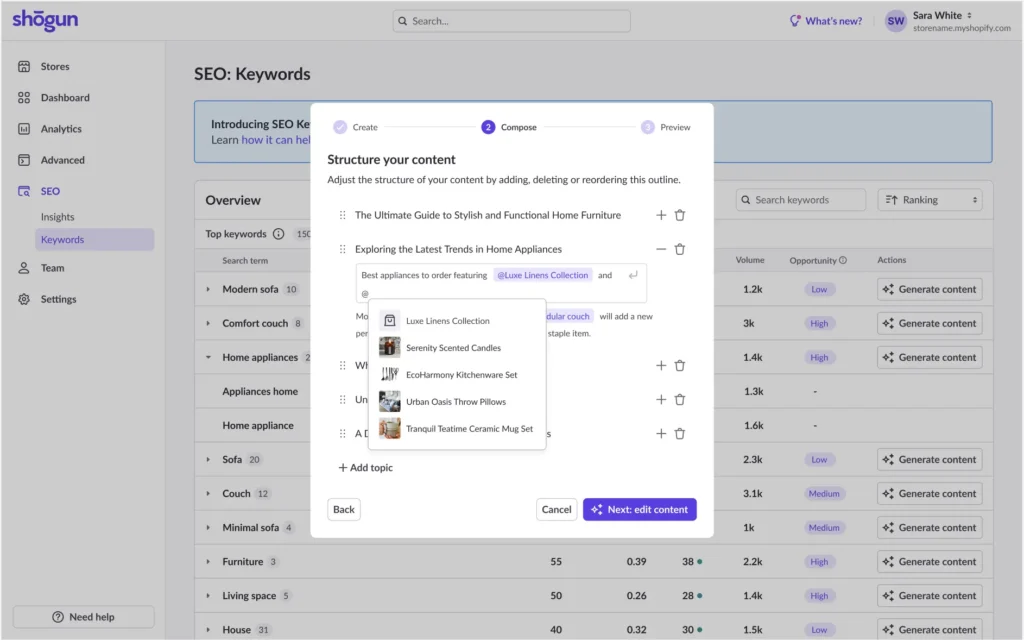Most Effective Methods for Finding Long-Tail Keywords for Your Shopify Store

Long-tail keywords are one of the most important elements of SEO strategy for all Shopify stores.
Just in case you’re new to digital marketing, let’s break down what these terms mean. Keywords are the phrases people plug into search engines to find content. There are two types of keywords — short-tail keywords, also known as head keywords, and long-tail keywords.
Head keywords receive a lot of search volume, and they tend to be relatively short phrases such as “table” or “chair”. Head terms are extremely competitive to rank well for–even for established brands.
Long-tail keywords don’t get as much volume as head terms, and they are usually longer and more specific (e.g., “wooden coffee table with lift top” or “best chairs for fire pit”).
Search engine optimization (SEO) is the practice of using these keywords to drive more traffic to your site.
The main benefits of targeting long-tail keywords include:
- Less competition: Backlinks, which are links from another site to yours, are one of the key factors that services like Google and Bing use to determine the rankings on search engine results pages (SERPs). The more popular the site linking back to you, the better. Generating these backlinks requires expensive content marketing efforts, and it can take years to build up enough high-quality backlinks to get a good ranking on the SERP of a head keyword. On the other hand, the lower level of competition for long-tail keywords means it takes much less time, money, and effort to get a top ranking. Even small stores with few backlinks have a shot.
- Higher conversion rate: Head keywords are vague. Someone searching for “table” might be ready to buy a table, or they may still be in the preliminary research stage of the purchase process. When someone uses a long-tail keyword, they have a more fully formed idea of what they’re looking for — that means if they land on your page, they’ll be much more likely to click on the buy button.
- More affordable advertising: If you engage in paid search advertising campaigns, you’ll find that the rates for long-tail keywords are much lower than they are for head keywords.
In this guide, we’ll show you how to discover long-tail keywords for your Shopify store and use this information to drive more traffic and potential customers.
Finding Long-Tail Keyword Opportunities for Your Shopify Brand
Shogun makes it easy to find long-tail keywords for your Shopify store with its SEO Keyword Analyzer, which can provide you with a detailed list of keywords that you currently rank for.

For each keyword discovered with this tool in Shogun, you’ll be able to review the following information:
- Ranking: Where you rank for the keyword (a ranking of “1” would mean your site is the first result displayed).
- Volume: The average number of searches per month for the keyword.
- CPC: An estimate of how much a cost per click (CPC) ad would cost for the keyword.
- Difficulty: An estimate of how hard it would be to get a good ranking for the keyword (the higher the number, the more difficult).
- URL: The page of your site that is being linked to on SERPs for the keyword.
- Intent: Whether the searcher’s intent is informational, transactional, or both (more on this below).
Your low-volume, long-tail keywords that also have a low difficulty score are especially worth targeting. And the ranking metric will show you where you’re already doing well, and where you need to put in a little more effort.
Finding Long Tail Keywords in Google Search Console
Google Search Console can show you which long-tail keywords your Shopify store is currently ranking for as well. You can even use regex filters in Google Search Console to create a report that only covers keywords that are above a certain length, such as 25 characters.
In addition to long-tail keywords that you’re already ranking for, you should look for new keywords to target. Google itself can be a great resource for finding more keywords.
Using Google Autocomplete to find Long Tail Keywords
Start typing a head keyword that’s relevant to your store into the Google search bar and see what autocomplete results come up (these predictions reflect real Google searches).
For example, a Shopify merchant that sells furniture could start typing “end table” and then see that there is search demand for the phrases “end table with storage” and “end table and console set”.

The “Related searches” section of a Google SERP can give you some ideas for long-tail keywords, too.

Understanding Keyword Intent
As mentioned above, there are two types of keyword intent:
- Informational: The keyword indicates that the searcher wants to learn something (e.g., “best hiking boots for Pacific Northwest”)
- Transactional: The keyword indicates that the searcher wants to buy something (e.g., “hiking boots for sale”)
Once you know which long-tail keywords to target, you’ll then need to optimize content you already have or create new content for these keywords.
Transactional keywords are particularly valuable, as they show that the searcher is close to making a purchase. Keep in mind that some transactional long-tail keywords are more specific than others — you should use a keyword such as “men’s hiking boots for sale” to optimize a collection page, while “Timberland mid lace-up hiking boots” is a better fit for a product page.
Informational keywords are less likely to lead to a sale, but that doesn’t mean they should be ignored. Establishing your site as a trustworthy source of information will help you get noticed and make a positive impression. Even if a visitor isn’t interested in making a purchase now, this may persuade them to consider your store as an option in the future. Also, producing informative content (as long as it’s truly unique, accurate, and engaging) is one of the best ways to generate backlinks. You can target informational long-tail keywords with blog content like listicles and how-to guides.
To optimize content for long-tail keywords, find ways to add your targeted keyword to prominent parts of the page, including the title, headings, first paragraph, and meta description, without making it sound awkward or otherwise diminishing the quality of the content.
Find long tail keywords for your Shopify store with ShogunDiscover keyword opportunities with the Keyword Insights tool. Get started now
Creating a Keyword Planner/Spreadsheet
Between researching which long-tail keywords to target and figuring out how to incorporate these keywords into your content, there’s a lot of information to keep track of.
You’re probably not going to be able to do this all in your head. Setting up a keyword planner or spreadsheet will help.
Indeed, there are a number of free templates available online for this purpose. Create your own spreadsheet or download a template, then fill it in for the long-tail keywords you would like to target.

For each keyword in your spreadsheet, decide whether it makes more sense to map it to one of your product pages, collection pages, or blog posts.
And if you don’t have any existing content on your site to optimize for a given keyword, be sure to note in your spreadsheet that you should create new content to go after that opportunity.
Creating Blog Content for Your Shopify Store for Long-Tail Keyword Opportunities
Blogging is the most powerful tool that merchants have to capture more long tail traffic for their store quickly.
Blogs generate revenue just like product pages–so they should be utilized as part of a comprehensive marketing strategy for your brand.
You can use Shogun’s SEO Keyword Content Creation Copilot feature to significantly reduce the amount of time it takes to make blog posts for your long-tail keywords.
Using keywords identified with the SEO Keyword Analyzer, Shogun will automatically create an outline for a new blog post.
You’ll then be able to edit this outline as well as add a description to specify the length, tone, and focus. Also, the AI-generated outline will include references to some of your product and collection pages, and you can add, edit, or remove such references as needed.

Once you’re happy with the outline, you can then generate an entire blog post without writing a single word yourself. You will be able to go in and make any edits you find necessary before publishing, though.
It should be noted that SEO Keyword Content Creation Copilot can only be used in conjunction with the SEO Keyword Analyzer — this is an all-in-one solution that addresses just about every blog marketing need.
Of course, you can write blog content manually in Shogun as well. Shogun provides you with a wide variety of blog templates that you can use to set up your pages with just a couple clicks. And if you prefer a more customized approach, Shogun’s visual editor gives you full control over the look and functionality of your blog post pages, allowing you to design your own templates and reuse them over and over for every new post you want to create.
Find long tail keywords for your Shopify store with ShogunDiscover keyword opportunities with the Keyword Insights tool. Get started now

Phill Moorman
Phill, the VP of Marketing at Shogun, is a seasoned expert in ecommerce. With a keen focus on strategic marketing, Phill drives growth and cultivates brand success in the dynamic online marketplace.



